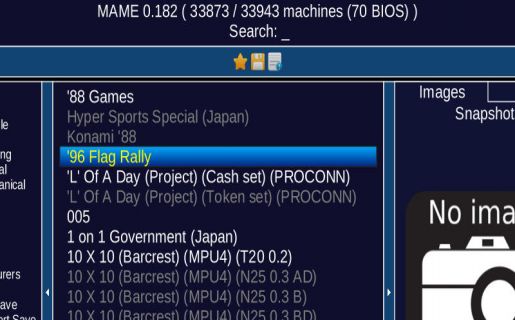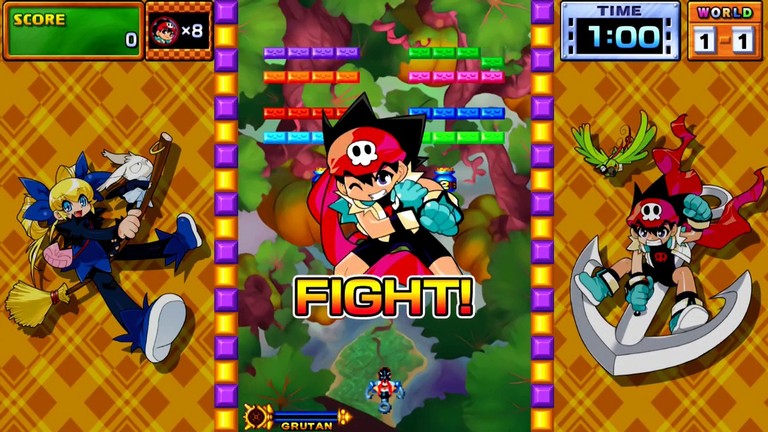
- #HOW TO INSTALL MAME EMULATOR ON PC HOW TO#
- #HOW TO INSTALL MAME EMULATOR ON PC DRIVERS#
- #HOW TO INSTALL MAME EMULATOR ON PC FULL#
For example, there are several options to configure vector displays which have no effect for games with any other kind of display. Feature highlights Content-aware core optionsīecause MAME 2003-Plus supports more than 4,000 games, there are a number of core options which only apply to a subset of its library.


One of the new features added to core also allows users to generate their own DAT via the MAME Menu.
#HOW TO INSTALL MAME EMULATOR ON PC HOW TO#
Unless you are already sure that you have a romset collection that is correctly built for MAME 2003-Plus, you can consult the official docs for instructions on how to rebuild and verify your collection by using ClrMamePro.Īs detailed in the building romset docs linked above, a ClrMamePro-compatible XML DAT file is maintained in the MAME 2003-Plus repository for users to download. While more than 95% of MAME 2003-Plus romsets are identical to MAME 2003 and MAME 0.78 romsets and can be used as-is, new and fixed games require romsets that are built for use with this core. Another one of the games which benefit from an NVRAM bootstrap is Lunar Lander, which uses the bootstrap to avoid requiring the user to complete a Service Mode reset process before it is playable the first time. That means in MAME 2003-Plus, Mortal Kombat 2 is configured with an appropriate volume when first launched rather than requiring use of the Service Menu. For example, this core incorporates a number of NVRAM “bootstraps” that pre-configure games with sensible default internal settings. MAME 2003-Plus also strives to be as easy to start working with as possible.
#HOW TO INSTALL MAME EMULATOR ON PC FULL#
For example, there is full support for remapping player controls in the libretro frontend rather than requiring users use the legacy MAME input binding system from standalone MAME. One of the other things that makes MAME 2003-Plus distinct from the other libretro MAME cores is an emphasis on integration between MAME 2003-Plus and the libretro API. The most current list of new and fixed games can be found in the CHANGELOG. In addition to contributions from arcadez, the core has also benefited from the contributions of new and veteran MAME hackers. This core was first established when arcadez began adding games that were not available in MAME 0.78 to a new fork of the existing MAME 2003 emulator. There is a long tradition in arcade emulation of producing platform-specific and performance-optimized MAME builds. Screenshot of Bubble Bobble: Lost Cave, a hacked romset that arcadez backported to MAME 2003-Plus from MAME 0.202.
#HOW TO INSTALL MAME EMULATOR ON PC DRIVERS#
In addition to the games supported by MAME 2003, MAME 2003-Plus contributors have backported new drivers and substantial bugfixes for several hundred additional games. MAME 2003-Plus is part of a lineage of codebase forks and ports: this core was forked from MAME 2003, which is itself derived from Xmame 0.78, the X11/Unix port of MAME 0.78. Newly-supported games include Dyna Gears and DoDonPachi Dai-Ou-Jou The core currently has partial support for the RetroArch “Run Ahead” input latency reduction feature when Run Ahead is set to Second Instance - our goal is to support Run Ahead fully, as discussed later in this post.

MAME 2003-Plus implements libretro functionality like savestates and netplay when supported by the underlying MAME driver. Unlike other libretro MAME cores which remain fixed at one MAME version, MAME 2003-Plus is actively backporting more recent game drivers and features.

MAME 2003-Plus is a new arcade emulator core which prioritizes 1) usability and frontend integration, 2) performance, and 3) compatibility across the range of libretro-supported platforms including mobile devices, single board computers, and consoles. In Summer 2018, RetroArch added MAME 2003-Plus to the arcade section of its Core Updater.


 0 kommentar(er)
0 kommentar(er)
